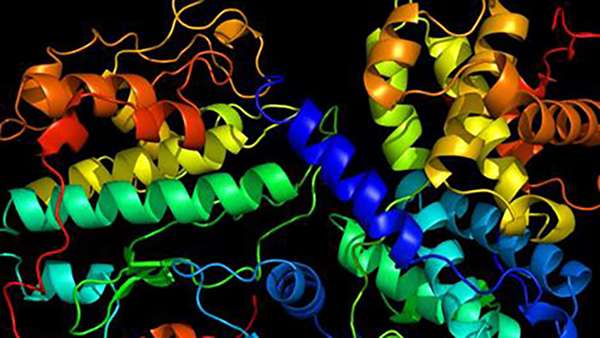Researchers, including Rohit Pappu from Washington University in St. Louis, studied the pP27Kip1 protein, whose job is to stop a cell from dividing or to slow the division. Genetic mutations in p27 and other proteins like it are major culprits in cancer.
At busy intersections, traffic signals generally favor the road with the greatest volume to keep traffic moving. In the same way, cell division in the human body is regulated by proteins that control how cells divide, move and protect themselves from stresses.
Rohit V. Pappu, the Edwin H. Murty Professor of Engineering in the School of Engineering & Applied Science at Washington University in St. Louis, and his former postdoctoral researcher Rahul Das, working in collaboration with Richard Kriwacki and his research team from St. Jude Children's Research Hospital in Memphis, Tenn., made a discovery that uncovers the molecular logic of how dividing cells are stopped in their tracks. The results were published May 2 in PNAS Early Edition.
The team studied the pP27Kip1 protein, whose job is to stop a cell from dividing or to slow the division. This is an important job, because genetic mutations in p27 and other proteins like it are major culprits in cancer, Pappu said.
"Understanding how p27 functions as an inhibitor of the cell cycle is key to working out how to design mimics of p27 that can stop the proliferative growth of cells, which is a key signature in human cancer," Pappu said.
In earlier work, Kriwacki's team showed that the presence of p27 acts as a stop sign for dividing cells. The modification of a key amino acid by adding a phosphate group initiates the degradation of p27, which puts p27 into the cell's trash bin, removing the stop sign and allowing the cell to continue to divide.
The collaboration between Pappu's and Kriwacki's labs began around a shared interest in so-called intrinsically disordered proteins. Unlike conventional proteins, p27 and other intrinsically disordered proteins perform their functions without folding into well-defined three-dimensional structures.
In 2013, Pappu and Das, now staff bioinformatics scientist at the Rothberg Institute for Childhood Diseases and a visiting scientist at Yale University Cancer Center, showed that the shapes and sizes of intrinsically disordered proteins are regulated by patterns of positive and negatively charged amino acids in the linear sequence. This finding opened the door to a design strategy whereby the researchers studied the impact of altered patterning of oppositely charged residues on the efficiency of phosphorylating a particular amino acid that controls the degradation of p27 and stops cell division.
"All of the designed variants increased the efficiency of p27 phosphorylation, implying that the naturally occurring sequence patterns have evolved to ensure a longer-lasting stoplight," Pappu said.
Pappu said the finding is helping his group and other scientists uncover the molecular logic in the cell cycle and a variety of other cellular processes that are controlled by intrinsically disordered proteins.
"We have put in place a strategy that can be deployed across various systems to work out the logic by which these noodle-like unstructured proteins function," Pappu said. "This should allow us to understand the principles that govern the working of molecular switches that influence cell division, cell movement and programmed cell death."
More information: Rahul K. Das et al. Cryptic sequence features within the disordered protein p27regulate cell cycle signaling, Proceedings of the National Academy of Sciences (2016). DOI: 10.1073/pnas.1516277113
Journal information: Proceedings of the National Academy of Sciences





















